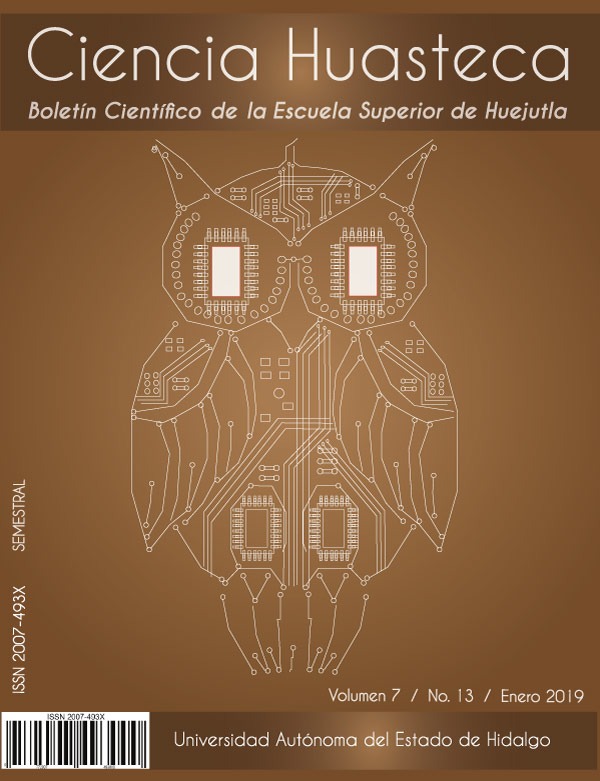Medicinal Plants Used in the Therapeutics of Patients with Hypertension and Type II Diabetes, of the Tepehuana Indigenous Region
Abstract
This study was realized utilizing the northeastern medicinal plant collection from the state of Veracruz (aka the Tepehuana region) with the aim of raising awareness of their physiologically-active compounds and their therapeutic application in type 2 diabetes and hypertension. These plants were collected in their wild type state and extensive research of their known therapeutic effects as alternative allopathic treatment in patients suffering the mentioned chronic degenerative diseases was conducted. Mexican herbalism is an extensive field and its origins date back to ancient times when our ancestors began the arduous task of classifying medicinal plants according to their observed effects; however, over time the knowledge and use of these plants has greatly diminished, replaced by commercially-available drugs and the pharmaceutical industry. Furthermore, the great biodiversity of plants still conserved in modern-day Mexico continues to contribute to allopathic treatments in the population, particularly in the rural areas. Therefore, our main objective is to disclose novel physiologically-active compounds from these plants, with the purpose amplifying their therapeutic targets and reducing the adverse effects that synthetic drugs exert on vital organs, including the liver and kidneys. The future perspectives of this study focus on the extraction of these compounds, and their pharmacological and toxicological characterization, employing both cellular and animal models, with the goal of bench-side to bed-side applicability.
Downloads
References
Referencias
Garcia-Lujan C, Pérez Hernández BE, Martinez-Romero A, Castro Barraza F. Uso de plantas medicinales y suplementos dieteticos para el control glucemico de la diabetes. Revista Chapingo Serie Zonas Aridas. 2009:8;229-239.
Manuel Ramiro H, J. H. El internista, Medicina interna para internistas. 12va edición. México DF: McGraw-Hill interamericana editores, S.A. de C.V. 2003: pp29.
Beyra A, León MC, Iglesias E. Estudios etnobotánicos sobre plantas medicinales en la provincia de Camagüey (Cuba). Anales del Jardín Botánico de Madrid 2004:61;185-204.
Jung, M. Park M, Lee HC, Kang YH, Kang ES, Kim SK. Antidiabetic Agents from Medicinal Plants. Current Medicinal Chemistry. 2006:13;1203-1208.
Kumar-Singh S, Kumar-Rai P, Jaiswal D, Watal G. Evidence-based Critical Evaluation of Glycemic Potential of Cynodon dactylon 2007:5;415-420.
Samuelsen AB. The traditional uses, chemical constituents and biological activities of Plantago major. Journal of Ethnopatology 2000:71;1- 21.
Ceballos SJ, Perea MC. Plantas medicinales utilizadas por la comunidad indígena de Quilmes (Tucumán, Argentina). Boletín Latinoamericano y del Caribe de Plantas Medicinales y Aromáticas. 2014:13;47-68.
Revilla-Monsalve MC, Andrade-Cetto A, Palomino-Garibay MA, Wiedenfeld H, Islas-Andrade S. Hypoglycemic effect of Cecropia obtusifolia Bertol aqueous extracts on type 2 diabetic patients. Journal of ethnopharmacology. 2007:111; 636-640.
Andrade-Cetto A, Vazquez RC. Gluconeogenesis inhibition and phytochemical composition of two Cecropia. Journal of ethnopharmacobiology. 2010:130;93-97.
Andrade-Cetto A, Wiedenfeld. Hypoglycemic effect of Cecropia obtusifolia on streptozotocin diabetic rats. Journal of ethnopharmacobiology. 2001:78;145-149.
Aguilar-Salinas CA, Velazquez-Monrroy O, Gómez-Pérez FJ. Characteristics of patients with type 2 diabetes in México: Results from a large population-basade nationwide survey. Diabetes care 2003:26; 2021-2026.
Hernández-Galicia E, Aguilar-Contreras A, Aguilar Santamaria L…. Studies on hypoglycemic activity of Mexican medicinal plants. Proceedings of the western pharmacology society, 2000:45;118-124.
Andrade-Cetto A, Heinrrich M. Mexican plants with hypoglycaemic effect used in the treatmen of diabetes. Journal of ethnopharmacobiology. 2005:99;325-348.
Alonso-Castro AJ, Salazar-Olivo LA. The anti-diabetic properties of Guazuma ulmifolia Lam are mediatedby the stimulation of glucose uptake in normal and diabetic adipocytes without inducing adipogenesis. Journal of ethnopharmacology. 2008:118;252-256.
Nazoora-Saleh A, Kusum S, Md-Iqbal K, Sapna R. Protective effect of ethanolic extract of solanum nigrum on the bloodsugar of albino rats. International journal of pharmaceutical sciences and research, 2010:1; 97-99.
Poongothai K, Ahmed KSZ, Ponmurugan P, Jayanthi M. Assessment of antidiabetic and antihyperlipidemic potential of Solanum nigrum and Musaparadisiaca in alloxan induced diabetic rats. Journal of Pharmacy Research. 2010:3;2203-2205.
Sugunabai J, Jayaraj M, Karpagam T, Varalakshmi B. Antidiabetic efficiency of moringa oleifera and solanum nigrum. International Journal of Pharmacy and Pharmaceutical Sciences. 2014:6;40-42.









